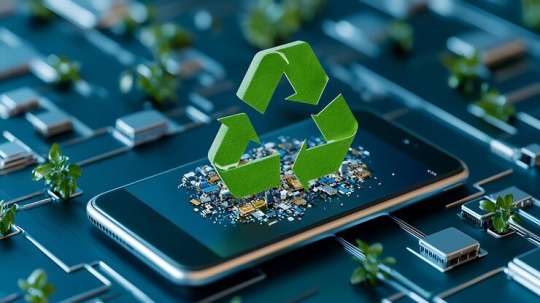#ITLifecycleManagement
Explore tagged Tumblr posts
Text
How Companies Can Reduce E-Waste Through IT Lifecycle Management

As the pace of digital innovation accelerates, businesses across India are investing heavily in technology. But with every upgrade comes a consequence: the rapid generation of electronic waste. To combat this growing challenge, companies are turning to IT lifecycle management as a strategic way to reduce e-waste and drive sustainable operations.
Implementing a complete lifecycle approach to IT assets from procurement to disposal allows businesses to minimize waste, maximize value, and meet both compliance and sustainability goals.
What Is IT Lifecycle Management?
IT lifecycle management (ITLM) refers to the strategic planning, acquisition, use, maintenance, and disposal of IT assets such as computers, servers, mobile devices, and networking equipment. By managing assets efficiently at every stage, companies can extend their lifespan, reduce costs, and minimize e-waste generation.
Smarter Procurement = Less Waste
E-waste reduction begins before a device is even purchased. Companies can adopt green procurement policies, choosing hardware with longer life cycles, energy-efficient certifications, and upgradeable components.
By working with certified IT recycling companies and e-waste solution providers, businesses can plan for the end-of-life stage right from the start, reducing environmental impact and ensuring proper electronic waste disposal.
Regular Maintenance and Upgrades
Instead of replacing equipment prematurely, companies can extend asset life through regular maintenance, part replacement, and software upgrades. This approach slows down the rate at which hardware becomes obsolete.
Engaging with an IT disposal company that provides asset tracking and refurbishment services helps maintain performance while keeping electronics in use longer a key practice in sustainable e-waste management.
Responsible IT Asset Disposition (ITAD)
Once IT equipment reaches the end of its useful life, secure and certified disposal is critical. This is where IT asset disposition (ITAD) plays a vital role.
Certified partners follow global standards like NIST 800-88 and DoD 5220.22-M for secure data wiping, ensuring all sensitive business data is completely destroyed. They also provide audit trails, certificates of destruction, and e-waste certificates to keep your business compliant with ISO 27001, GDPR, and CPCB regulations.
Enable Asset Reuse and Refurbishment
Not all end-of-life assets need to be scrapped. Devices that are still functional can be refurbished, resold, or donated. This helps recover value, reduce procurement costs, and significantly lower the amount of electronic waste.
Partnering with a trusted technology recycling company helps streamline refurbishment and resale while ensuring proper reporting and documentation.
EPR and Legal Compliance
India's E-Waste Management Rules require businesses to dispose of their e-waste responsibly. Working with a CPCB-authorized e-waste company near me that provides Pan India services ensures full compliance under Extended Producer Responsibility (EPR).
This not only helps avoid penalties but also aligns your business with national sustainability goals.
Final Thoughts
Effective IT lifecycle management isn’t just about asset optimization it’s a long-term strategy for reducing your organization's environmental impact. From eco-friendly procurement to secure e-waste disposal, each stage in the lifecycle plays a role in building a greener future.
By partnering with certified providers who offer data destruction, waste control, urban mining, and computer scrap pickup, businesses can align operations with their ESG goals and reduce their e-waste footprint.
For complete IT lifecycle and e-waste management solutions, visit techazar.in
#ITLifecycleManagement#EWasteSolutions#ITAssetDisposition#SecureDataWiping#ElectronicWasteDisposal#TechnologyRecycling#EwasteCompany#GreenIT#SustainableBusiness#CPCBApproved#ISO27001#ITDisposalCompany#UrbanMining#EPRCompliance#Techazar
0 notes
Photo

Carve out | IT Carve-out | Data Carve-out
Are you facing the challenge of IT carve-out? Then we have the solution for you. Realize the data carve-out with our View Box archiving system.
#carveout#itcarveout#datacarveout#datalifecyclemanagement#ITlifecyclemanagement#applicationdecommissioning#avendata
1 note
·
View note